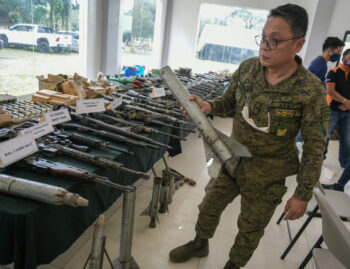NAAWAN, Misamis Oriental (MindaNews / 2 Feb) – Traditionally, news is a story about an event disseminated to the public by the print or broadcast media. It is perceived as a truthful or factual reporting of an event as it happened. Often, to ascertain accuracy, facts are crosschecked with the observations of witnesses on the ground.
The birth of investigative journalism gives a twist to newswriting or reporting. The stories of investigative reporters are not based from an actual coverage of an event but as a result of their research or investigation of a topic of public interest, such as serious crimes, corruption in government, and business scams. An investigative report is intended to inform on the veracity of something that escaped public notice or attention. Whatever, all news reporting is supposed to be about truth.
In the advent of the Internet technology various websites and applications have emerged where users are enabled to create and share contents or participate in social networking to promote ideas, concepts, information or products. A new media is born, otherwise known as social media, which either compliment or compete with the mainstream media as a source of information. Two new kinds of journalists came to being from this development: the reporters and writers of online publications, a group that adhere to the ethics of traditional journalism; and a writing class known as bloggers many of which are generally anonymous or who hide their identities through the use of pen names in sharing their thought- products to the online public.
The anonymous bloggers and unscrupulous public relations practitioners, also hiding their identities communicating online, are suspected as the source of fake news. It is no coincidence that fake news proliferates side by side with investigative journalism for it is, in fact, a counter-response to investigative reporting. The freelance social media journalists dish out to the public an “alternative truth” to the truth of mainstream or traditional media. And this is what fake news is all about.
Hence, fake news can be any of the following:
A story aimed to overturn an investigative report with concocted facts to muddle the issues and refurbish the image of the person(s) adversely affected by the report.
A fabricated story about something reported to have happened on a particular time and place with the intention of gaining sympathy for somebody and provoking hatred for another.
A fabricated story about an event or a particular act of a person aimed primarily to tarnish and destroy the character and reputation of that person.
Another kind of fake news from different sources their occurrence of which is covered by traditional media includes:
A claim or report in public by a person in authority on something by which after a day or two is negated by an actual event. The intention is to gain public appreciation or approval of his or his agency’s accomplishment/performance.
A public disclosure or allegation by a person in authority about somebody, which is taken back as simply a rouse or a joke when proven non-existent upon verification.
How are we to distinguish the news that swirls around us? Consider this. A factually gathered and reported news aims to inform as truthfully as it can in accordance to the ethics of traditional journalism. The report is generally invoked or serves as the basis of intelligent discourses on political, economic or social issues.
A fake news, on the other hand, aims to muddle or confuse public discourses on anything. It is disinformation driven to vilify and destroy persons or institutions to one’s advantage.
When faced with a news or information in the social media, don’t immediately swallow it hook, line and sinker. Take time to check its veracity by comparing how it is reported, if at all, in traditional media online outlets. If it is not reported there considering the newsworthiness of the event, then it is likely a fake one. If is similarly reported by traditional media with almost the same accuracy or presented facts, then it could be a reliable news.
Fake news in Hitler’s Germany was known as black propaganda. It was a tool to misinform and hide a true state of affairs in order to confuse the opponents, suppress democratic discourse, stifle dissent, and entrench the regime.
Fake news is becoming a global phenomenon; it proliferates today both in developing and developed countries.
Does this indicate the comeback and rise again of authoritarianism and fascism in the world stage?
(MindaViews is the opinion section of MindaNews. William R. Adan, Ph.D., is retired professor and former chancellor of Mindanao State University at Naawan, Misamis Oriental, Philippines.)







